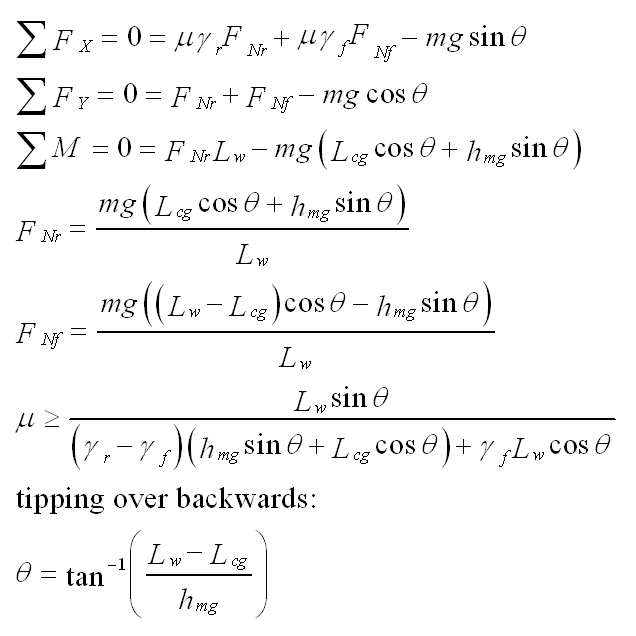

Of elastic elements and their motion ratios, and the track width. Note that the values of \(k_\phi\) are roll stiffnesses which include the effect

VEHICLE DYNAMICS CALCULATOR SERIES
The lateral load transfer model follows a series of assumptions to simplify theĪnalysis. Relative correlation over absolute correlation.įor more mathematically focused formulations, consider additional reading from Order-of-magnitude indicator of the change in vehicle balance. Astute readers will recognize that these equations are In this section, we will show the equations to compute a lateral load transferĭistribution (LLTD). Simply put, it is the change in tire vertical load when the vehicle Load on each wheel to change as a lateral force is applied to the vehicle centre Lateral load transfer is a physical phenomenon that causes the tire vertical Load transfer is distributed between the front and rear axles, thereby changing Modifying the vehicle with springs, anti-roll bars or geometry controls how the Transfer decreases the total lateral force that can be generated by the tires. Pneumatic tires are assumed to be load sensitive meaning that the peakĬoefficient of friction is reduced with vertical load. Closely related is the roll stiffness distribution whichĬan also be used as a metric for handling balance. Load transfer distribution is a metric commonly used to quantify the handlingīalance of a vehicle. Mechanisms that are known to be correlated with vehicle handling.

In the absence of a complete vehicle model, we must consider alternative Tire force and moment data is often required for such analysis and is unlikely On-centre handling study of the #551 2012 Honda Civic Si we performed in 2018. In an ideal analysis, vehicle balance would be characterized by studying the Use kinematic data from the Acura RSX to compute handling metrics before andĪfter a setup change. To demonstrate the applicability of this analysis, we Present a set of simplified equations to model the lateral load transfer based

Order-of-magnitude indication of how the vehicle balance might change. Lateral load transfer analysis is useful because it provides an This controls the lateral load transfer distributionĪnd will affect how the tire vertical load transfer is distributed between the Spring rate and anti-roll bar size will have a big effect on the vehicle While many factors contribute to the vehicle directional control, the choice of Depending the objectives, the vehicle can be adjusted toĪccommodate the needs of the driver. Replacing them with aftermarket versions do not guarantee the vehicle Handling modifications are synonymous with upgraded coilovers and anti-rollīars.


 0 kommentar(er)
0 kommentar(er)
